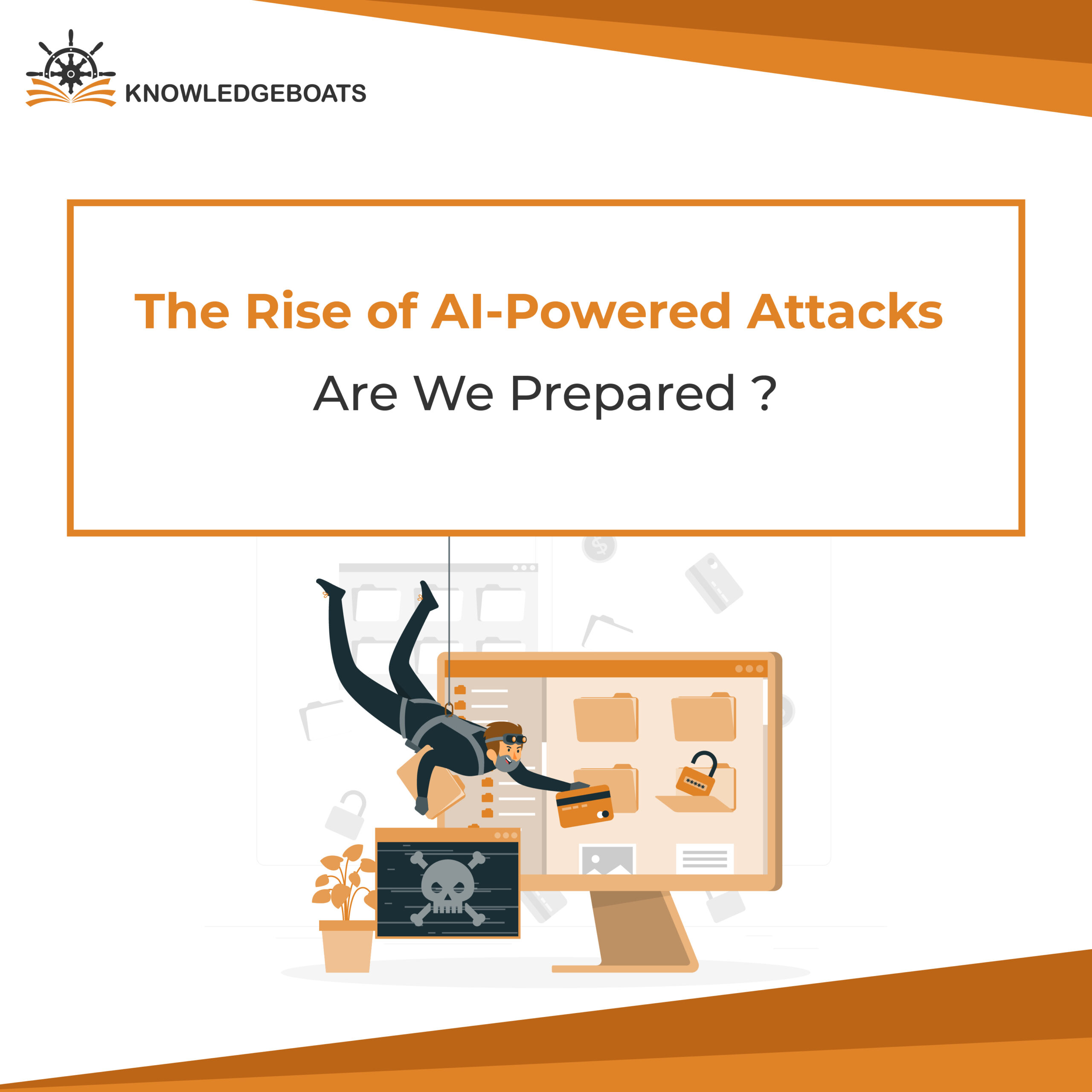
The virtual world is locked in a constant battle. Hackers are regularly discovering new tricks to get in, while defenders are constantly trying to keep them out. Artificial Intelligence has joined the game. AI can either be protect us or if misused, it can lead to serious chaos. In this article, we will discuss about AI and cybersecurity, How these AI-powered attacks take place and the measures that can help us fight back?
AI-powered Attacks
AI is changing the way we live, but not just that; it is also changing the way cybercriminals operate. They are using it to make attacks faster, smarter, and more rigid to stop. To understand the full scope of this threat, let’s examine several key areas where AI is being misused:
Automated reconnaissance
With the help of an AI, hackers can easily identify weaknesses in your systems. They can instantly scan networks, seeking for any weak spots. This is known as automated reconnaissance. If any vulnerabilities are found, AI can help them plan a targeted attack.
Social engineering
Another destructive use of AI is social engineering. This is when hackers trick you into giving your details. AI-powered chatbots can convincingly impersonate real individuals, making it easier for attackers to steal your personal details like passwords, credit card numbers, or social security numbers.
Synthetic media and deep fake
Fake audio and videos called deep fakes are another major issue. AI can very easily make this realistic fake to damage someone’s reputation and spread wrong information.
Automate financial frauds
AI can also be used to steal money. It can analyze a great amount of financial data to find any types of patterns or weaknesses. This helps fraudsters plan out financial fraud.
AI can also be biased. If anyone uses unjust data to teach AI, it can also be unfair. This can cause AI-powered attacks and target certain groups of people. One more challenge is to learn how AI makes decisions. AI systems are confusing, and it’s tough to understand how they work. This makes it more challenging to protect against AI-based attacks.
AI in Defense
AI is one of the most powerful tools in the battle against cyberattacks. It can work tirelessly and make sure to secure your digital assets.
You can use AI to track real-time network activity and suspect any kind of unusual behavior. It can examine a significant amount of data, seeking patterns that may indicate an AI-powered attack. For instance, if there’s a rash spike of traffic from an unusual source or if your data is getting transferred rapidly, AI can easily flag this as fishy. These early signs of warning can help businesses to detect threats before they cause severe damage. Let’s explore in what areas you can use AI in defense.
Automated threat response and detection
AI can easily categorize threats, prioritize them, and even make decisions to help correct breaches. For example, if it detects a ransomware attack, it can separate the infected system to stop the malware from spreading. Once a possible threat is identified, it can automatically initiate protocols. This includes:
- Network segmentation: Isolating the compromised system from the rest of the network to avoid lateral movement of the ransomware.
- Micro-segmentation: Creating granular network segments to stop the infection within an exact area.
- Traffic redirection: Diverting network traffic away from the infected system to prevent more damage.
- Automated incident response: Triggering predefined actions, like shutting down services or applications, to limit the ransomware’s impact.
This quick response can save organizations money and time.
SIEM (Security Information & Event Management)
SIEM systems collect data from different security tools within an organization. With the help of this huge amount of data, it can detect possible threats that may be overlooked by human analysts. It can assist you in revealing the bigger picture of the security landscape. These systems can process large volumes of data through the integration of AI and derive new information in terms of patterns of attacks and possible links between them. This proactive approach, coupled with the ability to correlate massive data sets, gives the security team a big-picture view of the environment and enshrines effective decision-making.
Predictive analytics
AI can also help in predicting future cyberattacks. Identifying patterns and analyzing records of attacks can help you foresee possible threats. This helps you reinforce your defense, lowering the chances of successful cyberattacks.
For instance, let an AI system identify a pattern of phishing attacks that is specific to a given industry; it can forecast another wave of the same with regard to other fields. Equipped with such insight, organizations can be better prepared and implement measures to help protect their networks; this may include improving the organization’s phishing awareness simulation, strengthening the organization’s email client filter.
Moreover, the techniques of artificial intelligence can examine vulnerability databases and their patterns to predict future attacks on them and thus determine which vulnerability is most likely to be attacked. This way, security teams are able to make proper strategies on critical areas to focus or patch, and resource allocation.
The Human-AI Partnership
AI can work best if paired with human expertise. AI offers tireless analysis, accuracy, and speed, while cybersecurity professionals bring judgment, creativity, and understanding to the table.
One big challenge for cyber teams is to face a consistent flood of alerts. Many such alerts are false signals, which can divert teams from real threats. AI can help them filter out these false signals and allow them to concentrate on the real problem.
AI can also assist in decision making process. By examining huge amounts of data, it can offer valuable suggestions and insights. This helps professionals make more detailed and quicker decisions.
The ideal strategy for defense against cyberattacks is to pair humans with AI. By merging their strengths, businesses can create a more flexible cybersecurity posture.
Conclusion
To successfully avoid AI-powered attacks, it’s crucial to work together. This can keep everyone safe and protected. Also, we continuously need to keep developing and researching new methods to defend against these attacks. Technology keeps evolving; hence, it’s vital to stay ahead of cybercriminals. It is only possible to prevent AI-based threats if all interested parties, including governments, industries, and cybersecurity specialists, act together. Cooperation in this aspect is increased to fight together, disseminate information, and set international best practices.
Also, the fight against threats that use AI should be active and constantly evolving.. It is a continuous battle that is going to be more fierce and challenging for human intelligence along with artificial intelligence facilities. Thus, the ability to counter AI-based threats will determine the future of Internet space protection.



